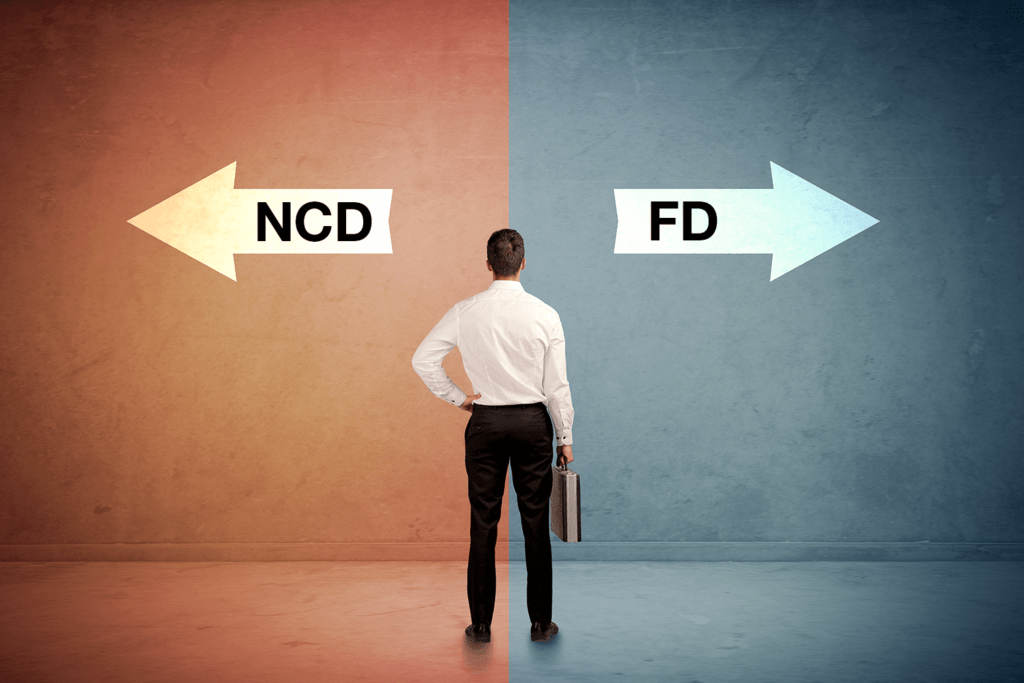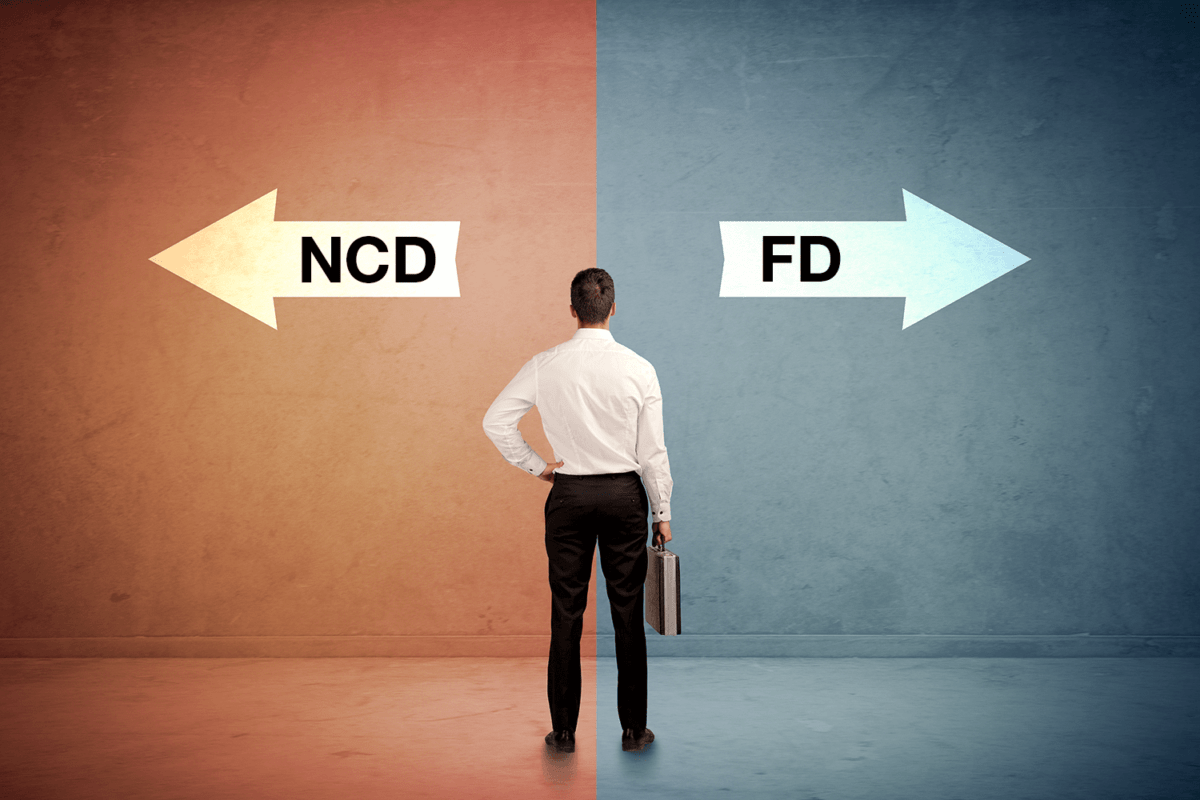
As a prudent investor, you should identify the best investment option that capitalizes on the upward trajectory of the market. In light of this, we will compare and contrast two popular investment options. They are the traditional Fixed Deposits (FD) and the Non-Convertible Debentures (NCD) that are currently in vogue.
We are witnessing a global scenario where banks have been adopting tighter monetary policies to combat inflation. It is a reaction to the increasing inflationary pressures brought on by several macroeconomic factors. The Reserve Bank of India is no exception. Since 2022, the RBI has been gradually raising interest rates in an attempt to keep inflation under control. However, even the best investment options do not reflect these increases. Consequently, investors also bear its implications. In this context of a volatile economy with persistent inflation, it is advisable to pause and reconsider your investment options.
FDs have traditionally been the best investment option in India, with tenures ranging from 7 days to 10 years. On the other hand, NCDs, which are becoming more popular, are debt instruments offered by companies that come with tenures ranging from 90 days to 20 years. As a result, they represent a long-term investment option for retail investors.
However, you should select the one that maximizes your return and minimizes your risk. It demands a holistic evaluation of their features including the security, risk profile, and return. Let’s analyze them to factor in the potential downside and upside.
1. Return
The best investment option always entails the best stable return. High return is crucial for long-term economic stability. Therefore, before investing in NCD or FD, it is imperative to compare their favourable returns.
In India, a 5-year FD currently carries an average interest rate of about 6%. Some banks provide marginally higher rates as well. Meanwhile, NCDs carry a higher level of risk than bank fixed deposits. Therefore they offer higher returns than the FDs with some of them giving rates as high as 10%.
For instance, as of March 2023, some banks offered FDs with terms of 1 to 5 years with interest rates ranging from 5.5% to 6.5%.On the other hand, some NBFCs offered NCDs with interest rates ranging from 7.5% to 9.5 %.’Assetify’ NCDs gave an average of 10% annualised returns, paid quarterly.
Most importantly, unlisted NCDs are gaining popularity among investors because of their potential to generate high returns. Owing to their risk profile, they provide a higher rate of return than traditional fixed-income investments.
2. Taxation
One significant aspect to consider while searching for the best investment options is the associated tax implications. Let’s weigh the tax benefits of FDs and NCDs to select the one that suits your investment goal.
The interest income received from an NCD is subject to tax at normal rates, just like the income earned from FDs. They come under income from other sources. Further, the income earned as capital gains through the selling of NCDs attracts capital gains tax. Normal rates of tax would apply to short-term capital gains arising from the sale of NCDs, while long-term capital gains on the sale of listed NCDs would be taxed at concessional rates of 20% with indexation benefits under the IT Act.
Unlisted NCDs are also eligible for tax benefits. Tax advantages from investing in unlisted NCDs include no TDS deduction on interest income up to a certain limit and a lower tax rate of 20% on long-term gains for investments kept for more than three years.
Furthermore, the Fixed Deposits (FDs) are subject to Tax Deduction at Source (TDS). To be precise, when the interest on fixed deposits exceeds Rs. 10,000, it attracts TDS. It reduces the investor’s readily available cash flow. On the other hand, interest earned on NCD is not subject to tax deduction at source(TDS) if held in demat form and listed on the stock exchange. Consequently, it gives investors a benefit in terms of cash access.
3. Risk
Analyzing the risk profile is significant to ensure that your investment dreams align with the investment vehicle that you choose.
The Deposit Insurance and Credit Guarantee Corporation guarantees FDs up to Rs 5 lakh per deposit per bank, making them a popular investment option. On the other hand, NCDs do not have government backup. However, higher returns compensate for the absence of a guarantee.
For unlisted NCDs – Interest rates, market fluctuations, and the creditworthiness of the issuer can affect their values. However, with proper due diligence, diversification of assets, and long-term investment goals, one can ride out the risks. The higher return of unlisted NCDs eclipses the risk involved.
For an investor with high-risk tolerance, investing in NCDs is the best investment option to achieve higher returns compared to FDs. However, investing in NCDs depends entirely on the creditworthiness of the issuer, making them unsecured debt instruments. As a result, investing in NCDs needs careful consideration of the issuer’s creditworthiness. Since higher return outweighs the risk, NCDs represent a potentially lucrative and best investment option.
4. Liquidity
You can make the best investment option only after considering liquidity factors. Hence, comparing FDs and NCDs based on liquidity will help you to choose the one that matches your investment goals.
The liquidity that NCDs provide to investors over FDs is one of the main attractions behind its popularity. NCDs’ tradability on the stock exchange gives investors the leeway to sell them as per their requirements. It gives investors the freedom to sell their investments at any moment without incurring any significant restrictions or fees. However, unlike listed NCDs, unlisted NCDs are not tradable on the stock market. Hence, their liquidity comes from redemption upon the maturity or minimum lock-in period.
Investors in unlisted NCDs can surrender their debentures after the lock-in period and redeem their capital. Inadvertently, it attests to the capital or principal protection an investor gets through non-listed NCDs.However, the redemption date varies according to the terms and conditions of the issuer.
Thus, NCDs give investors more flexibility and liquidity. It entices investors who might need to sell their assets before maturity. Owing to NCDs’ tradability on the stock market, investors can exit their investments easily and realize returns or reduce losses. Furthermore, the fact that unlisted security offers capital security along with high returns has made them the popular choice among investors.
On the other hand, despite the highest safety and insurance coverage, FDs lack the liquidity that NCDs offer. It indicates that investors must wait until maturity to get the principal amount and interest. Although there are some provisions for early FD withdrawals, these actions generally incur a fee, which can reduce the returns.
Conclusion
In summary, fixed deposits are a secure investment option with a government guarantee. Hence, for short- to medium-term investments with a low-risk profile, FDs are a good investment option. In contrast, NCDs do not possess government guarantees and carry a higher degree of risk than bank FDs.However, they offer a higher rate of return than FDs. Unlisted NCDs are an appealing investment choice for investors who are willing to take more risk because they typically offer a higher rate of return If you can shoulder risk in exchange for higher returns, it is prudent to invest in unlisted NCDs.They are the best investment options for long-term investment. After all, it is time to explore diversified investment options to achieve long-term financial gains.

